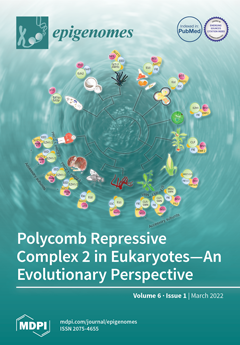Striated muscle has especially large energy demands. We identified 97 genes preferentially expressed in skeletal muscle and heart, but not in aorta, and found significant enrichment for mitochondrial associations among them. We compared the epigenomic and transcriptomic profiles of the 27 genes associated
[...] Read more.
Striated muscle has especially large energy demands. We identified 97 genes preferentially expressed in skeletal muscle and heart, but not in aorta, and found significant enrichment for mitochondrial associations among them. We compared the epigenomic and transcriptomic profiles of the 27 genes associated with striated muscle and mitochondria. Many showed strong correlations between their tissue-specific transcription levels, and their tissue-specific promoter, enhancer, or open chromatin as well as their DNA hypomethylation. Their striated muscle-specific enhancer chromatin was inside, upstream, or downstream of the gene, throughout much of the gene as a super-enhancer (
CKMT2,
SLC25A4, and
ACO2), or even overlapping a neighboring gene (
COX6A2,
COX7A1, and
COQ10A). Surprisingly, the 3′ end of the 1.38 Mb
PRKN (
PARK2) gene (involved in mitophagy and linked to juvenile Parkinson’s disease) displayed skeletal muscle/myoblast-specific enhancer chromatin, a myoblast-specific antisense RNA, as well as brain-specific enhancer chromatin. We also found novel tissue-specific RNAs in brain and embryonic stem cells within
PPARGC1A (
PGC-1α), which encodes a master transcriptional coregulator for mitochondrial formation and metabolism. The tissue specificity of this gene’s four alternative promoters, including a muscle-associated promoter, correlated with nearby enhancer chromatin and open chromatin. Our in-depth epigenetic examination of these genes revealed previously undescribed tissue-specific enhancer chromatin, intragenic promoters, regions of DNA hypomethylation, and intragenic noncoding RNAs that give new insights into transcription control for this medically important set of genes.
Full article






